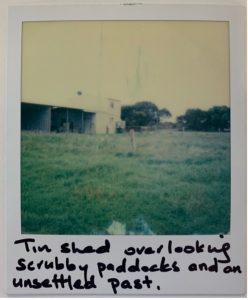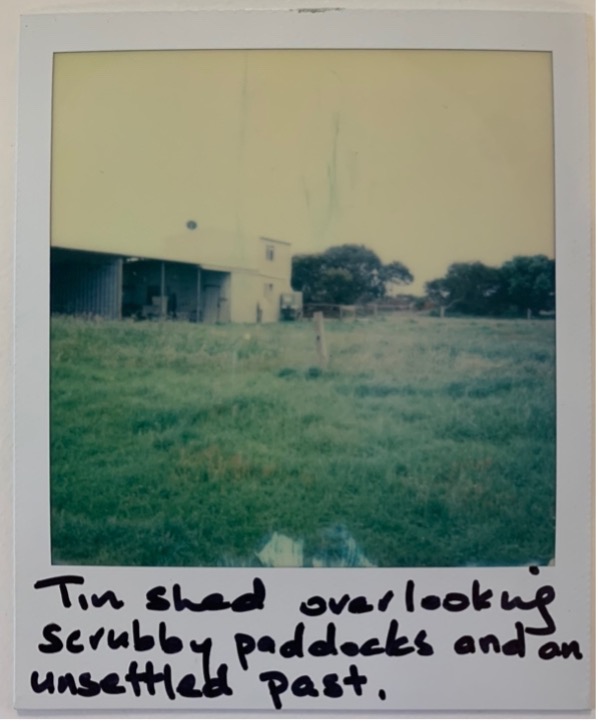Overlooking scrubby paddocks and an unsettled past

A tin shed in the south-eastern corner of the Australian mainland, 38°39’06.2”S 145°35’39.8”E, mid-afternoon, midwinter, 13°C, WSW 8 km/h or thereabouts. Gazing over my laptop into the paddocks, I look over an undulating strip of scrubby paddocks and heaths haphazardly divided into farms, weekenders and a large coastal reserve, the Bunurong Marine Park.
Sunlight and a hint of azure peeks through the clouds overhead while the fresh south-wester dries sodden paddocks and bracken fronds. The weather changes quickly here – just minutes ago squalls of salt-laden rain whipped off Bass Strait to beat against the windows and walls. Now the Melaleuca, Banksia and Manna Gums sway elegantly, and the brilliant yellow bloom of the coastal wattle brightens the winter landscape.
Black cockatoos screech overhead, foraging the nearby pines for cones to hurl at the gravel road. Opening my senses to this intricate physical and metaphysical ecosystem I try to be present to the abundance of organic life, movement, sounds and smells that surround me. But it is the echoes, fragments and remnants of the past that grasp my attention.
While it may seem counterintuitive, it is the echoes, codas and remnants of the past that grasp my attention most vigorously. I have come to see these realms of the past and the present as inherently entwined. The past informs the present, but the present is also always changing the past.
